Everything about the Smithian: types and varieties, home care
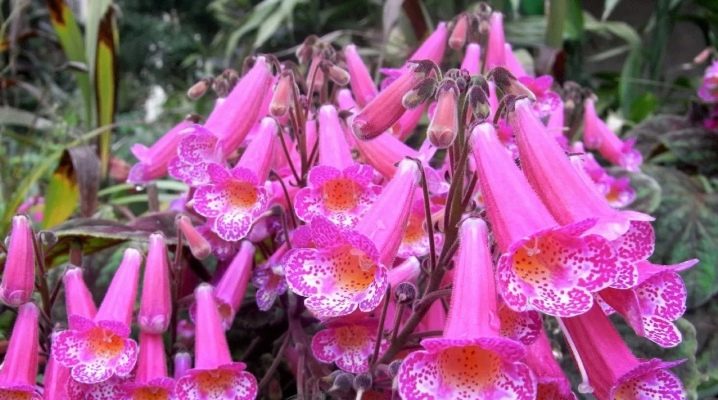
Smitiante is called nonhelia in another way, she comes from the Gesneriev family. It is a perennial herb native to the South American continent and is named after Matilda Smith, an artist. Florists love this representative of the flora for its unpretentiousness, because home care does not require complex manipulations.
Smitiante is very rich in species and varieties, which allows you to select and breed at home plants that are diverse in appearance.

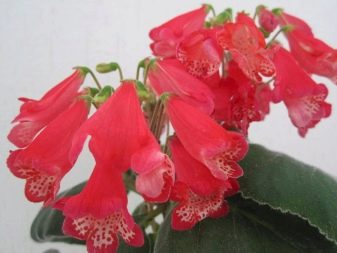
Peculiarities
The characteristic features of the Smithyanta allow not to be confused with other houseplants:
- the root system of the plant is covered with scales;
- erect shoots, with a down;
- the height can reach one meter;
- leaves are velvety, green-brown color;
- the shape of the leaves is oval, there is a weakly expressed cordate at the beginning, and with teeth at the edges;
- the top of the leaf is rather uneven, juicier in color than the lower part, with veins and pile;
- flowering like bells, begins with a narrow tube, ends with curved edges;
- the color palette is varied, there are varieties of yellow, red, pink and white flowers;
- inflorescences of the apical type in shape resemble an ear;
- flowering is long-term, abundant, begins in the first days of summer and lasts until the middle of autumn, after which the smithiante “goes to rest” until the onset of spring.
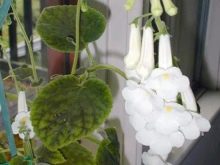


Views
There are several varieties of Smithyanta, which are popular among flower growers.
- Smitiante cinnabar red. This perennial is not too tall - it rarely grows more than 30 cm. It has an elongated foliage, up to 15 cm, which is bordered with jagged edges. Leaves with fluff, velvety. The flowering is racemose, the flowers themselves are red bell-type, with a slight yellowish tint in the throat, no longer than 4 cm.
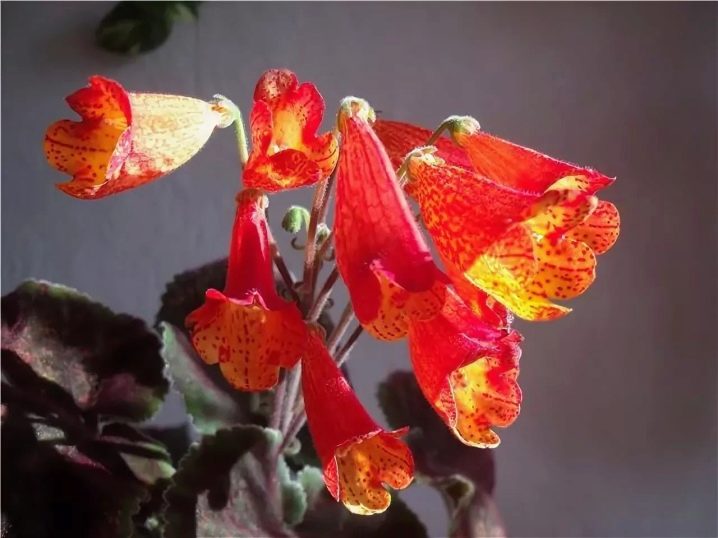
- Smitiante multiflorous. Also applies to low-growing representatives. Decorated with velvet hairy foliage, which has the shape of an elongated heart. The color is juicy, green. Inflorescences are yellow, from 3 cm in size.

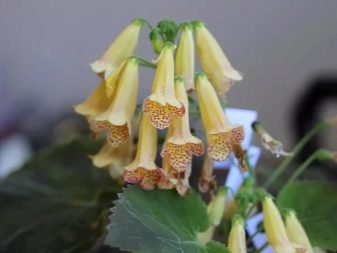
- Zebra look. This herb is taller than the previous representatives - up to 60 cm. The leaves are long, oval, placed parallel to each other, they are velvety and green, with brown veins. The bloom is bright scarlet, yellow in the middle, racemose, located at the top of the bush.
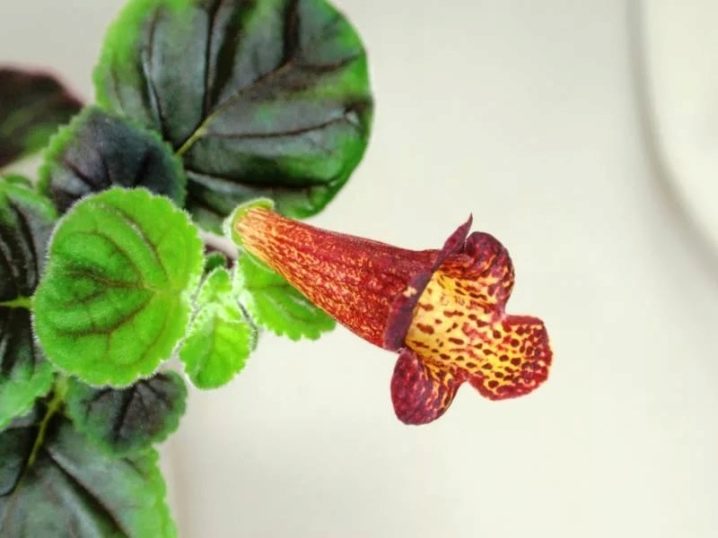
- Hybrid smithiantha. An upright perennial with downy, oblong foliage, reminiscent of a heart. The color is saturated, green. Blooming in the form of bells can be presented in shades of orange, pink, yellow.

- Point view. A decorative representative of the flora, which does not grow more than 40 cm, the foliage is long, rounded, up to 18 cm. The leaves are decorated with a pattern of purple veins. Blossoming yellow, bright, with red dots.
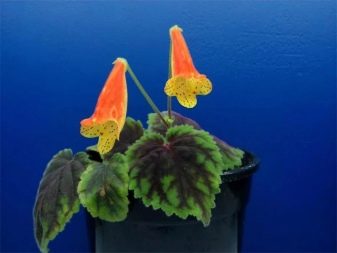
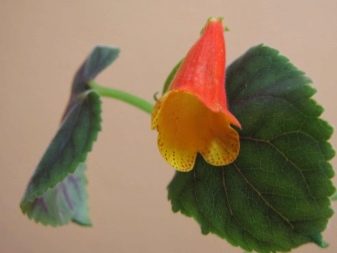
- A lovely smithian. Upright, perennial herb, does not grow above 40 cm. The foliage is fluffed, round. The inflorescences are located at the top, resembling a tube and a bell in shape.

- Shiny smithiantha. This is the rarest species, found among true Smithyanta breeding enthusiasts. Has toothed, hairy foliage of a round shape. Blossoming orange-red, has a small dotted pattern at the bottom of the flower.


Varieties
The variety of smithyanta varieties allows growers to choose a plant for every taste.
- Sunny day - tubular flower of piercing yellow color, monochromatic. Luxurious foliage of green-brown-purple hue is distinguished by an intricate pattern.
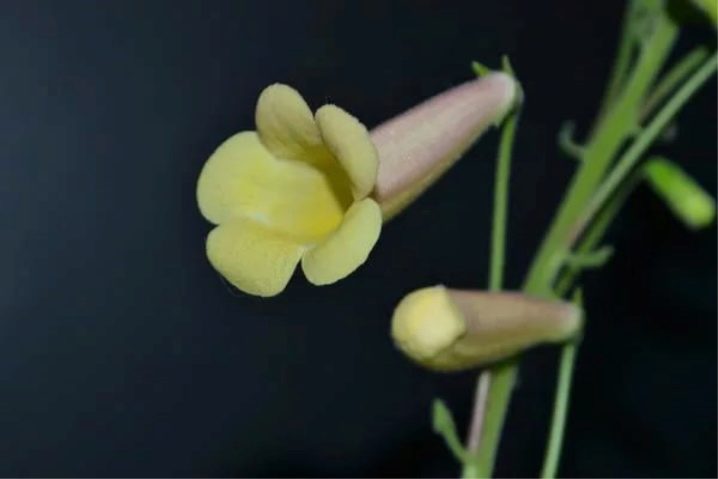
- Winter characterized by brightly painted foliage and fuchsia-colored blooms, with a dotted pattern and white blotches.
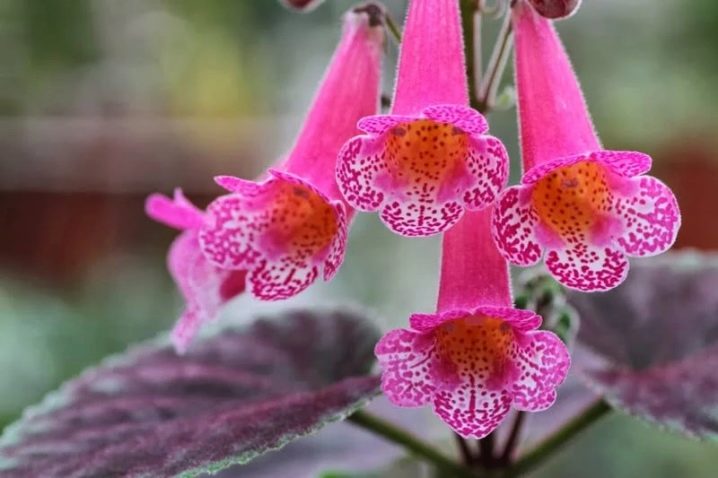
- Formosa sand painting - an elegant plant with a rich and bright ornament on the foliage, the bloom is bright, rich yellow, with a dark pink pattern.

- Abbey light - flowers are tubular, exquisite peach color with a shade of yellowness, foliage is juicy green, saturated.
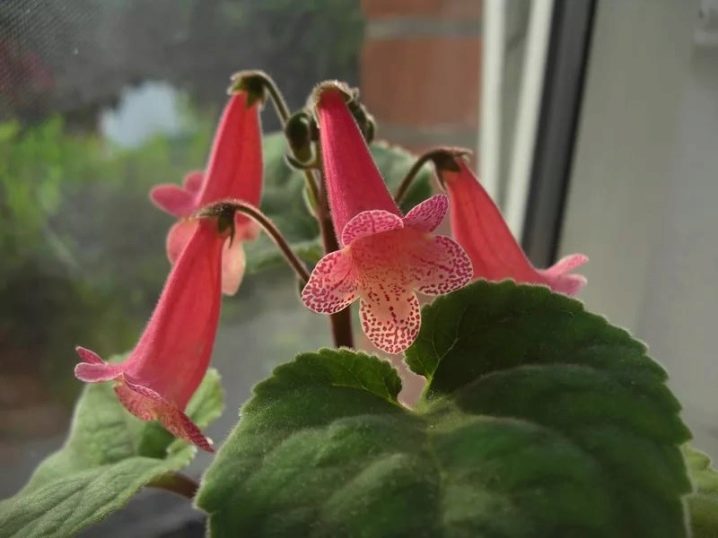
- Zorro differs in expressive flowering, contrasting combination of pink and yellow.

- "AB-Chinese Lanterns" - here the name speaks for itself, it stands out with a red-pink shade of flowering.
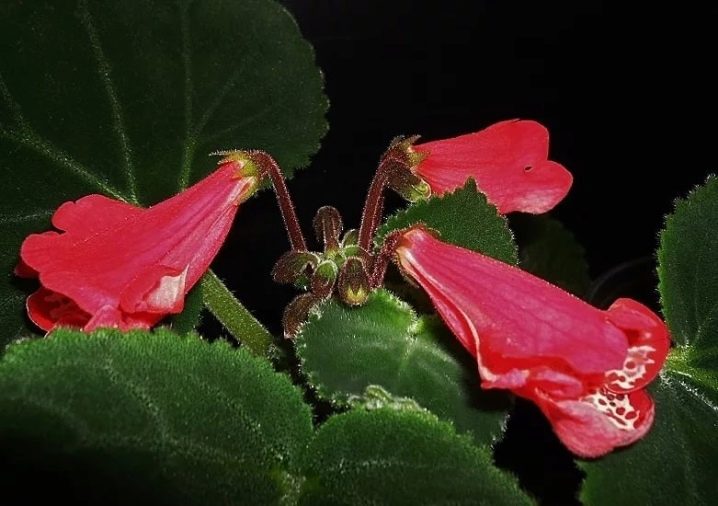
- Texas freckles has pubescent flowers and leaves, bright pink color, spots and dots.
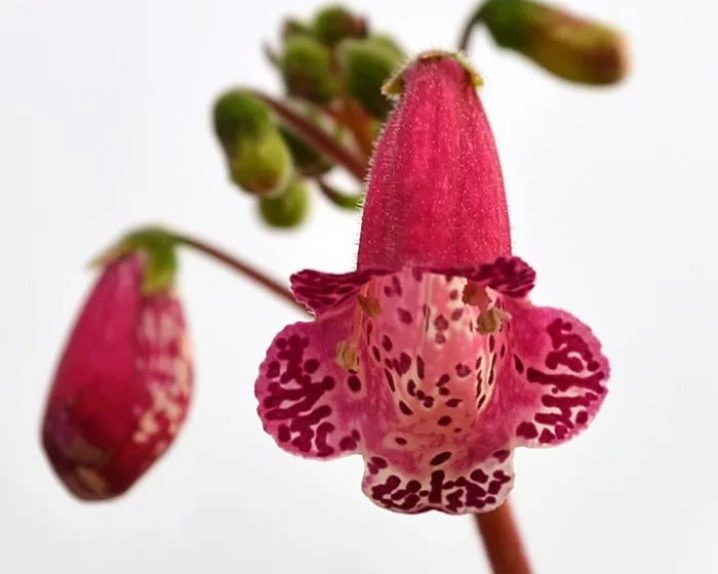
- Florida sunspot - one of the most delicate and expressive representatives, combining a snow-white shade in bloom and a light lemon fleur in the throat.
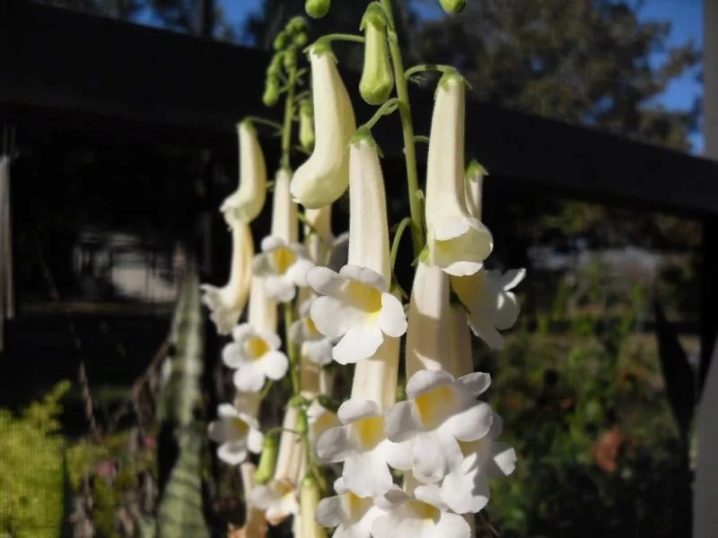
- Midvinterljus - the bell in the middle is white-yellow, outside is pink-lilac, the shape is elongated;

- Snow angel - a sophisticated plant with elongated white flowers, dark green foliage.
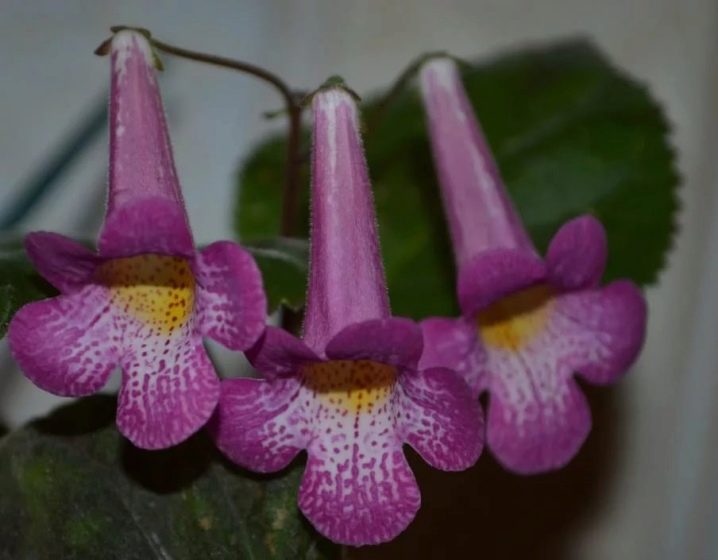
- Sunset - one of the brightest representatives of the species, flowering orange-purple, dotted, very pronounced, leaves with a spectacular pattern.
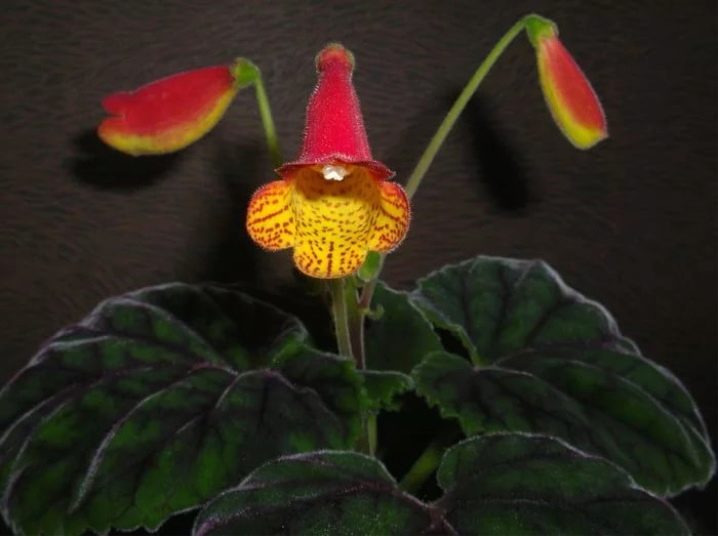
- Designers friendship has original elongated foliage with a serrated edging, flowers are pale pink with a yellow center, unexpressed dots.
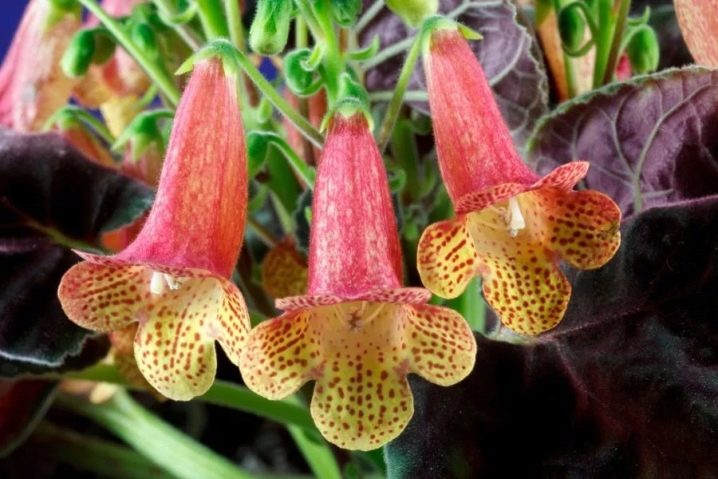
Home care
First of all, you need to think about the location of the flower and the lighting. The plant thrives and blooms best in diffused lighting, while direct sunlight can cause burns. Therefore, the smithyant should be placed on windows facing west and east. On the south window, you need to think about a slight darkening. The temperature regime is also important, the optimal fluctuations are:
- in summer - + 23-25;
- in winter - above +20.
Air humidification is one of the conditions for the healthy development of a plant. It is necessary to maintain a high level of humidity, but without spraying. It is better to use a container with a drainage layer of expanded clay or broken brick. A pot with a plant is periodically lowered into this container, but it is important not to keep the rhizomes in water, in order to avoid decay. Watering is carried out in abundant quantities during the growing season and flowering, as soon as the topsoil dries up.
At the same time, try not to overmoisten the plant. Moistening is done with warm water, which has settled without affecting the foliage. During the rest period, when the upper part hibernates, watering is extremely rare.

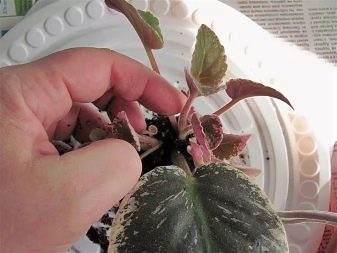
Fertilizing the plant is recommended universal top dressing from early spring to September, weekly... It is necessary to dilute the mixture in a less concentrated form than is required according to the instructions - at least twice. This representative of the flora is transplanted annually. For this, a ready-made soil for violets is purchased or a mixture is made of equal parts of sod, leaf, coniferous land and peat.
Reproduction
There are three ways to propagate a plant:
- seed;
- cuttings;
- division of the rhizome.

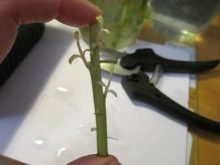
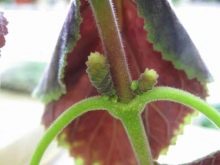
Algorithm of actions for seed reproduction:
- this procedure is carried out from the beginning of the year to April;
- small seeds are sown on the ground without falling asleep with earth;
- this container should be covered with polyethylene or a glass lid to create a greenhouse effect;
- it is necessary to regularly open and give fresh air to the ground;
- after about three weeks, you can wait for the emergence of seedlings;
- a flower multiplied in this way blooms in the same year.
Reproduction by cuttings occurs according to the following system:
- choose cuttings at least 5 cm;
- put them in a container of water until rhizomes appear;
- then you can transplant the cuttings into separate pots;
- if you withstand high humidity, it will be more comfortable for the cuttings to root;
- after the root system fills the entire container, the plant will need to be transplanted.
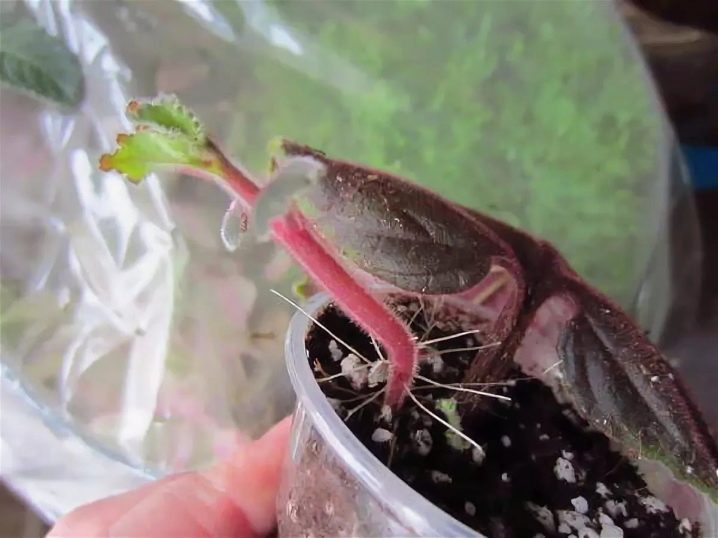
Reproduction by dividing the roots:
- separating parts of the roots, take those where there are buds;
- Lay out the root segments in a container with soil horizontally;
- location depth - not less than 2, and not more than 3 cm;
- place no more than 3 rhizomes in a small container.
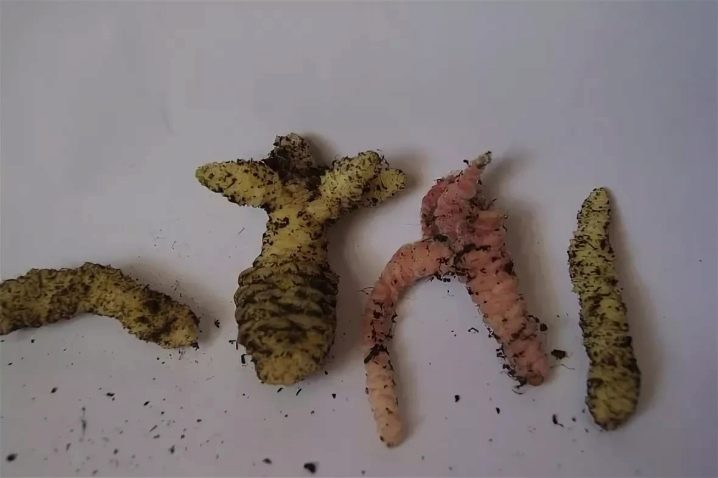
Diseases and pests
Despite the relative unpretentiousness, growers when growing Smithians face a number of difficulties.
- If the foliage is covered with brown spots, it is most likely that the plant was watered with too cold water. Perhaps she was harsh, not defended. Also among the reasons may be mechanical damage or improper watering - with the foliage being affected.
- If light yellow burns appear on the foliage, they may have arisen as a result of the direct rays of the sun. Consider if the flower might have overheated. In this case, you can save a houseplant by rearranging it in the shade, opening up fresh air. Another reason is drying out, in this case, the number of watering is increased. Water the plant only after it has stood in the shade and the pot has cooled to normal temperature. It is also possible that you have not fed the plant for a long time or overfeed it with mineral fertilizers.
- When the leaves are covered with a gray bloom, most likely the reason is a lack of fresh air, high air humidity, or a disease like a fungus.
- Violation of the rules of care, which were described above, often leads to the fact that the plant does not please with flowering. Perhaps he has little light, lacks minerals, the temperature is too low.
Smitianthu can be overcome by insect attacks, most often these are ticks, whiteflies, thrips.
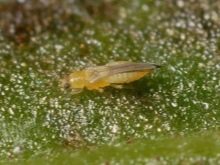
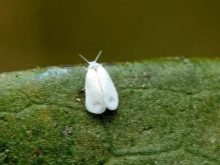
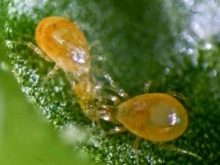
See the following video for Smithiante.























The comment was sent successfully.